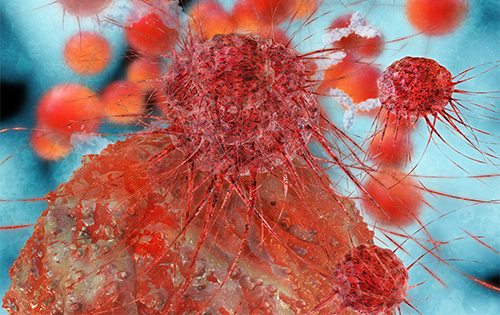
Investigators at the Medical University of South Carolina (MUSC) have recently identified unique functional oncogene signatures in four different human breast cancer cell types. The new study—“Functional oncogene signatures guide rationally designed combination therapies to synergistically induce breast cancer cell death”—which was published recently in Oncotarget may soon aid physicians in developing drug treatments for breast cancer patients based on the unique genetic autograph of their tumor.
Due to the heterogeneity of cell types for breast cancer patients, many tumors respond differently to the same treatment depending on which oncogenes are active and which are just along for the ride. Identifying the panel of active genes in a patient's tumor—called the functional oncogene signature—could help oncologists select therapies that target its growth.
“In order to move the field forward, we now need to be able to use oncogene signatures to tailor therapies using combinations of targeted drugs so that multiple driving oncogenes can be targeted at once,” explained senior study author Stephen Ethier, Ph.D., interim director of the Center for Genomic Medicine at MUSC. “Doing this successfully requires the identification of the oncogenes that the cancer cells are addicted to, as this allows the use of targeted drugs at very low doses. Low doses are essential if we are to use combinations of different targeted drugs.”
The MUSC team used next-generation sequencing and genome silencing techniques as each cancer cell type grew and multiplied to assemble a list of genes for each cell type's functional oncogene signature, i.e., those genes that were copy number amplified or point mutated, and most essential to cancer cell survival. Although thousands of candidate oncogenes were screened during experimentation, only a handful made the list—fewer than 20 for each cell type.
“We set out to identify the complete set of functional oncogenes in a small panel of breast cancer cell lines. The cell lines in this panel were chosen because they each contain a known receptor tyrosine kinase (RTK) oncogene,” the authors wrote. “To identify additional drivers, we integrated functional genetic screens with copy number and mutation analysis, and cancer genome knowledge databases.”
The generation of a list of genes deemed essential for tumor survival facilitated the selection of the best oncogene for pharmaceutical targeting. Since lower doses of targeted drugs can be highly effective, side effects could be reduced. For example, the researchers found that targeting two or more members of a signature with much lower total drug concentrations in combination still killed cancer cells better than one higher-concentration drug alone.
“The resulting functional oncogene signatures were able to predict responsiveness of cell lines to targeted inhibitors. However, as single agents, these drugs had little effect on clonogenic potential,” the authors penned. “By contrast, treatment with drug combinations that targeted multiple oncogenes in the signatures, even at very low doses, resulted in the induction of apoptosis and striking synergistic effects on clonogenicity.”
Surprisingly, a BCL2L1-targeted drug that worked in one cell line also then worked in a fifth breast cancer cell line with a similar oncogene signature containing BCL2L1, an oncogene not normally associated with breast cancer. This work demonstrates that one signature-targeting treatment can be extended to more than one cancer cell type. This means that patients with other types of cancer who have a similar functional oncogene signature might benefit from drugs that target BCL2L1, which are already in development.
The researchers believe that oncogenes identified in a tumor biopsy might one day soon provide a rational and individualized approach to pharmaceutical treatment with targeted drug combinations. Moreover, these new results could provide a rationale for redesigning clinical trials for breast cancer.











